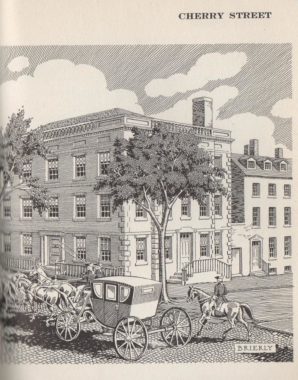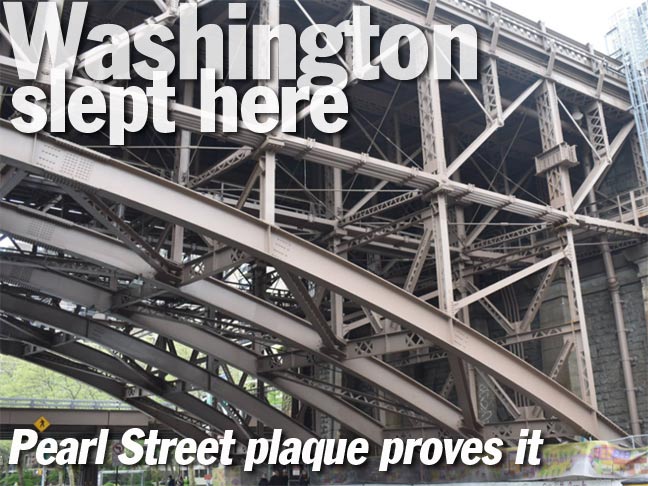Just north of Brooklyn Bridge, Pearl Street begins a turn to the northwest and acted, at the time, as a divider between the street pattern of lower Manhattan and the streets that edge up the spine of the Lower East Side, such as Monroe, Madison, Cherry and Henry. Over the centuries this particular aspect of Pearl Street has been obliterated as major projects like the Alfred E. Smith Houses have been constructed (between 1950 and 1953) as well as the Brooklyn Bridge and, decades later, the East River (Franklin D. Roosevelt) Drive and its approach roads, which have served to obliterate the street pattern.

Pearl Street, however, is the sole street that has been mostly retained. Until about 1812 the section west of Chatham Street, now Park Row, was called Magazine Street, after a storehouse for gunpowder — a leftover name from the Revolutionary War. The city decided to rename the section as a northwest and western extension of Pearl Street at that time.
Above is seen an 1885 map of lower Manhattan. Note Pearl Street, which at the time was shadowed by an elevated railroad, climbing north and then northwest. At the still-existing Dover Street, Cherry Street begins its northeast path at Franklin Square. This section of Cherry Street was obliterated when the Smith Houses were constructed and today, Cherry Street begins at Catherine Slip. The Municipal Archives paint a vivid picture of what Cherry Street looked like in 1940; now lined on both sides by housing projects and playgrounds, Cherry looks nothing like it did in 1940.

The Brooklyn Bridge is taken above Pearl Street by a tremendous arched structure. It’s unique as there is really no counterpart on the Brooklyn side.

Walk north on the east side of Pearl, and you will see a plaque affixed to one of the Brooklyn Bridge’s brick anchorages. You’ll miss it if you are walking or bicycling, as the traffic is a killer in this area in any case. The plaque was placed in April 1899 and marks a former residence of George Washington, who lived here while the US capital was in New York City from 1789-1790.
The plaque’s sponsors, the Mary Washington Colonial Chapter, still exists and is a division of the Daughters of the American Revolution (the DAR for short). The namesake, Mary Washington, was the President’s mother.

In 1770, Walter Franklin built a 3-story brick residence at 3 Cherry Street (the plaque called it #1 Cherry). The President resided in the house for approximately a year while the seat of US Government was Federal Hall on Broad and Wall Streets. Until 1816, the traffic triangle where Pearl, Dover and Cherry Streets met was called St. George Square, in honor of Britain’s patron saint, but after that, it was changed to honor Ben Franklin (not Walter).
The mansion came down in 1856, while all addresses on Cherry Street between 1 and 17 were obliterated by the Brooklyn Bridge abutment beginning in 1870.
Info and woodcut: The Streets of Old New York, J. Ernest Brierly, Hastings House 1953
Photos of bridge and plaque: Robert Mulero
Check out the ForgottenBook, take a look at the gift shop, and as always, “comment…as you see fit.”
4/29/19


1 comment
The New-York Historical Society owns three chairs made from wood salvaged from the demolished mansion:
https://www.nyhistory.org/exhibit/armchair-26
https://www.nyhistory.org/exhibit/armchair-10
https://www.nyhistory.org/exhibit/armchair-15